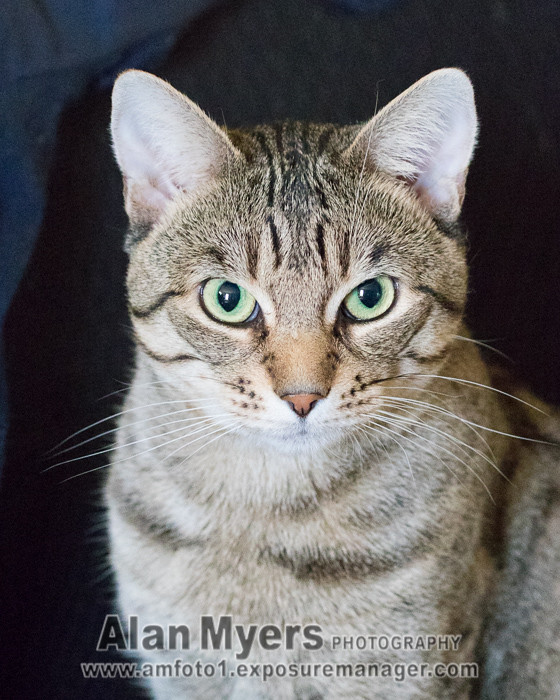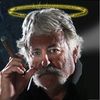Wide angle lenses
Jan 17, 2018 02:59:28 #
Dado wrote:
Thanks for the suggestion but I already have 5 cameras and 6 lenses. I'm beginning to think I should make do with what I have as I'm retired and 80 years old. Appreciate your input.
I did a little search and came up with this Sigma art lens. It is 14 mm f/1.8 and could be what you need to go wider and brighter. Sigma also has 18-35 mm f/1.8 lens that would be a great choice if you can live with 18 mm at the wide end.
http://www.bhphotovideo.com/c/product/1321307-REG/sigma_14mm_f_1_8_dg_hsm.html
Samyang also has a 16 mm f/2 lens for $370. It is manual focus but with focus confirmation so easy to use.
http://www.bhphotovideo.com/c/product/981716-REG/samyang_sy16maf_n_16mm_f2_0_ultra_wide_abngle.html
Jan 17, 2018 04:24:21 #
JPL wrote:
I did a little search and came up with this Sigma ... (show quote)
The samyang looks like the most affordable option 16mm not much wider but a stop faster , you will notice the difference in iq when you get to lower the iso.
Jan 17, 2018 06:03:38 #
Dado wrote:
I do a lot of pictures during church services and ... (show quote)
As a real estate photographer, you do not want to shoot interiors wider than the 17mm lens you have which is the real estate focal length lens of choice. Anything wider will grossly distort the image, cause barrel vertical lines and be distracting to the viewer. They will not be accepted by the discriminating viewer.
If you do not have moving subjects, the remedy is to shoot HDR on a tripod. Use f-11, 400 ISO, and shoot time exposures -2 / -1 / 0 / +1 / +2. Merge these exposures with HDR software and you will produce an attractive image with detail throughout the dynamic range.
Jan 17, 2018 06:39:20 #
billnikon
Loc: Pennsylvania/Ohio/Florida/Maui/Oregon/Vermont
Dado wrote:
I do a lot of pictures during church services and ... (show quote)
If you want wider, your at about 25 mm now, which is not that wide I agree. BUT, the 2.8 should not cause you your problems unless your shooting in the dark. I think your problem lies elsewhere. If you want wider I would suggest the new Nikon 10-20 at B&H.
https://www.bhphotovideo.com/c/product/1341603-REG/nikon_20067_af_p_dx_nikkor_10_20mm.html?sts=pi-ps
Now grant you this lens is slower than the 17-50 2.8 but anything wider and faster is going to cost a LOT more.
Then there is the the Nikon 12-24 f4, one stop slower
https://www.bhphotovideo.com/c/product/277227-USA/Nikon_2144_12_24mm_f_4G_ED_IF_AF_S.html?sts=hist-pi
and the sigma 12-24 f4 which actually cost more than the Nikon 12-24 at amost $1600.00
https://www.bhphotovideo.com/c/product/1282159-REG/sigma_205955_12_24mm_f_4_dg_hsm.html?sts=pi
But again, let me state, if your 2.8 is not bright enough I do not believe their is any wider, faster, option available unless you have a large bank account. Again, I believe their is a problem with your approach somewhere if your current 2.8 is not fast enough.
Jan 17, 2018 06:51:41 #
Jan 17, 2018 07:41:27 #
I did the church newsletter for about 5 years and faced the same issues. My rig was the D7200, Sigma 17-50 mm f2.8 and a Benro carbon fiber monopod. I routinely shot at ISO 1600 - 3200 using raw file format and processed in Lightroom/Photoshop. If I needed a wider view I did panoramas using Photoshop for stitching several images together. I guess the secret was to shoot a lot of images and useing noise reduction in the processing.
Jan 17, 2018 07:54:09 #
Don't shoot the performance - shoot the dress rehearsal instead. Put your money toward a good studio lighting system and learn how to use it so the lighting looks realistic and mimics the lighting in the church.
Jan 17, 2018 08:50:56 #
AK Grandpa wrote:
If you shoot mostly interiors, I recommend the Tokina 11-16 or 11-20. Also Tamron and Nikon have similar lenses . . .

Jan 17, 2018 09:48:22 #
Tamron has a new 10-24mm lens that is supposed to be nice. I have the older version and I like the broader zoom. I use the 24mm portion quite a bit. The D7500 is an excellent low light camera. It's just as good in low light as the D500, so you'd be able to shoot at high ISO with no problem and solve your lighting difficulties.
Jan 17, 2018 10:36:30 #
amfoto1
Loc: San Jose, Calif. USA
Dado wrote:
Yes I do noise reduction too in post editing. Also I shoot 1800-2000 ISO. My pictures are acceptable but wanted other opinions. I may consider the 18mm prime lens but would have to use both my camera during programs rather that be changing lenses during programs. Thanks for your input. Last low light shoot was a men's singing group. Lighting was o.k. until the director turned the lights down for visual effect. Not a good thing for us photographing the performance.
ISO 1800 to 2000 is not "very high". It's rather moderate by today's standards. Your D7200 is a recent enough model that it should be able to shoot at much higher ISO.
A very common problem is that people look at their images ridiculously large on their computers. A D7200's 24MP image viewed "at 100%" is like making a print 40 x 60" and then viewing it from 18 or 20" away on most modern monitors. OF COURSE an image looks like crap when it's viewed that large and so close! If this is what you're doing and how you're judging the noise in your images, try backing off to a more reasonable size... closer to the actual size you'll be using. It's fine or even necessary to zoom in to high magnifications while doing retouching of images... just not good for reasonable evaluation of noise... or focus and sharpness for that matter. Here's an example from one of my Canon cameras shot at ISO 16000...


As you can see from the enlargement on the right, there's noise in the image. But, so what? It really doesn't matter when the image is seen at a more reasonable and usable size.
I took the high ISO test shot shown above RAW without in-camera noise reduction and converted to JPEG in Lightroom with only the default noise reduction. I have more advanced NR that I do in Photoshop, when needed... but the above was shot as a "worst case" example and as "straight out of the camera" as I usually do, and was taken in a room lit by a single, 60 watt CFL bulb and a small window, both about 8 or 10 feet from the subject.
To minimize noise, it is important to avoid accidental underexposure... may even help to slightly overexpose (+1/3 or +2/3 stop, at most), then "pull" the image brightness back down in post-processing. If you have to "push" an underexposed image, increasing the brightness in post-processing, that will amplify noise greatly.
All of which brings me to another thing... The TYPE of lighting where you're shooting may be part of the problem. Fluorescent, sodium vapor and some other types of lighting actually cycle on and off at a high rate (60 hz in the US, or 120 per second). We don't see it with our eyes, but it tends to "fool" cameras and cause A LOT of badly underexposed images (which will look really noisy if you have to adjust them later in post-processing). I believe the D7200 and some other relatively recent Nikon have a feature called "Anti-Flicker" that can automatically detect the lights cycling and times the shutter release to coincide with the peak output. I use this feature all the time on a couple of my Canon and where I used to see at least half my images in those types of lighting without it end up badly underexposed, the anti-flicker feature makes for much more consistently accurate exposures, nearly eliminating the problem. You might give it a try.
Another trick that may work with ultra high ISOs is to convert the image to black and white. That may make it usable, since color noise is obnoxious, while in B&W it just looks like film grain and we're accustomed to seeing that in images.
Yes, a larger aperture lens may help. But keep in mind that big apertures also mean shallower depth of field and stronger background blur. That may or may not be a problem, depending upon your particular requirements. Shallow DoF also makes focus accuracy more critical, even slight focus errors can be more apparent.
"Fast" lenses with large apertures may not be at their sharpest wide open, either. I tend to use my 50mm f/1.4 stopped down to f/2, for example.
Instead of a wide view, you might have better luck with a short telephoto (such as 50mm), singling out performers when they're spot-lit. Spot lighting is usually much brighter than the broader lighting of performances.
Often stage performance photography is done during dress rehearsals (and prohibited during the actual performance). Don't know if that's an option for you, though.
In the end, there will be times when it's simply not possible to get a shot. There's just not enough light. If you can't use a flash, you're out of luck and might as well stop shooting and enjoy the show.
Jan 17, 2018 11:52:49 #
ole sarg
Loc: south florida
OK I will ask the stupid question. How fast are you shooting? You can gather lots more light by using a tripod and shooting at say 15 to 30th of a sec.
Jan 17, 2018 13:33:51 #
A question tangentially related to this thread. What is the "fastest" lens out there? Say, is there an f1 or f0.5 lens useful for low light situations as encountered by the OP in this thread? Is such a thing possible, physically what would it look like??? The fastest i have personally seen is a 50mm f1.4 prime. Thanks
Jan 17, 2018 13:34:16 #
Dado wrote:
I do a lot of pictures during church services and ... (show quote)
Samyang makes a very good reasonably priced 16mm f2 manual focus lens if you can live with the shallower DOF. Shooting at f2 will help your ISO.
Tokina makes a more expensive AF 14-20mm f2.
Jan 17, 2018 13:57:43 #
copladocus wrote:
A question tangentially related to this thread. What is the "fastest" lens out there? Say, is there an f1 or f0.5 lens useful for low light situations as encountered by the OP in this thread? Is such a thing possible, physically what would it look like??? The fastest i have personally seen is a 50mm f1.4 prime. Thanks
The fastest generally available may be f/0.9 or f/0.95. http://www.japancamerahunter.com/2012/01/the-incredible-canon-50mm-f0-95/ Apparently Zeiss manufactured a few f/0.7 lenses. http://petapixel.com/2013/08/05/zeiss-f0-7-you-can-now-rent-two-of-the-largest-aperture-lenses-ever-made/ F/1.2 lenses are not uncommon. I have a Canon 55mm f/1.2 lens adapted to EF mount.
Jan 17, 2018 15:21:40 #
AK Grandpa wrote:
If you shoot mostly interiors, I recommend the Tokina 11-16 or 11-20. Also Tamron and Nikon have similar lenses . . .
love my new Tok 11-20.
If you want to reply, then register here. Registration is free and your account is created instantly, so you can post right away.








